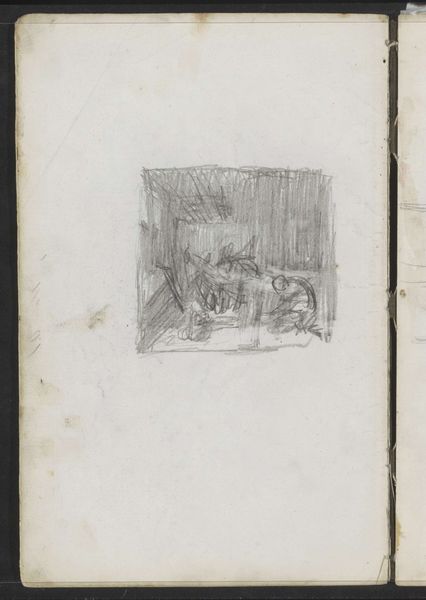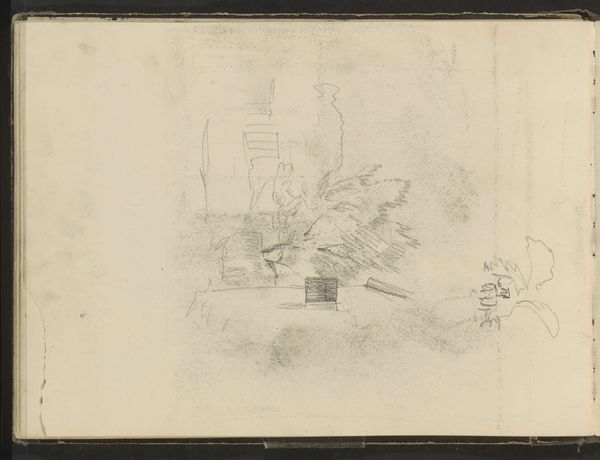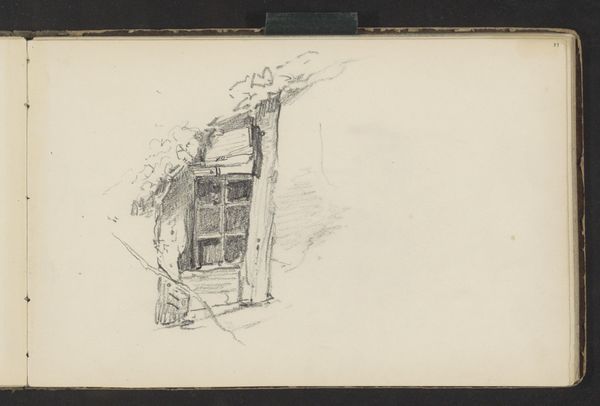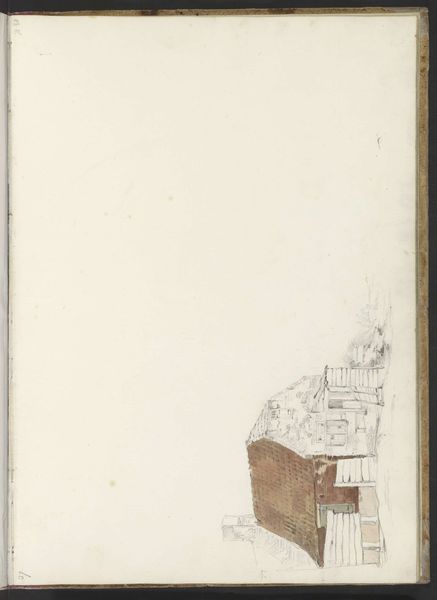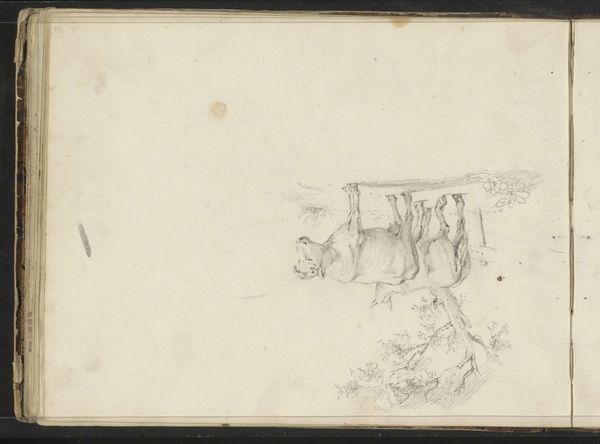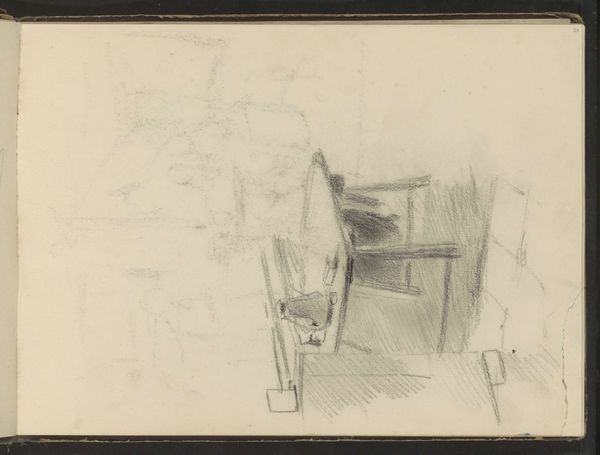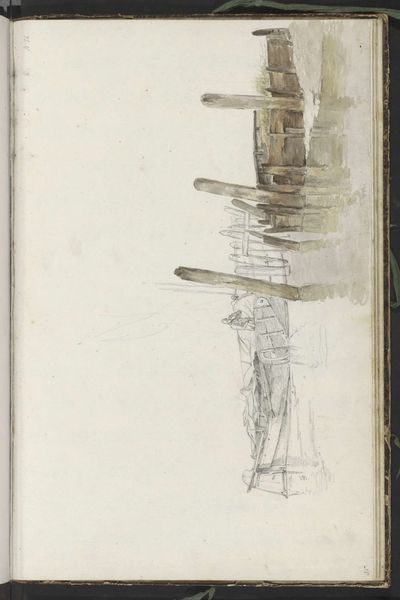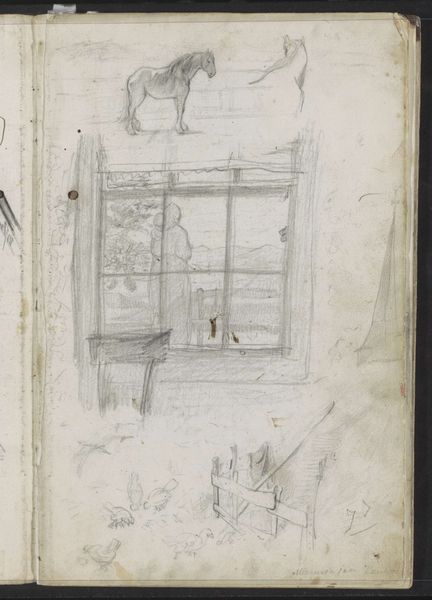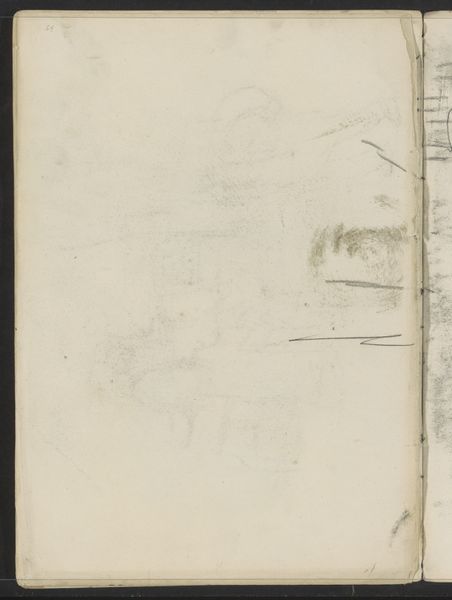
drawing, paper, watercolor
#
drawing
#
landscape
#
paper
#
watercolor
#
coloured pencil
#
romanticism
#
watercolor
Copyright: Rijks Museum: Open Domain
Curator: What a stark and honest scene. Johannes Christiaan Schotel offers us a glimpse into maritime life with "Aangemeerde boot bij een overslagplaats," a watercolor and ink drawing from the early 19th century. The piece resides here at the Rijksmuseum. Editor: My first impression is one of weathered practicality. The restrained palette focuses attention on the rough texture of the timber and the obvious wear and tear on the boat itself. This isn’t a romanticized view; it’s the honest face of labor. Curator: Exactly! The artist employs such a muted color scheme to underline that workaday reality. Waterways are enduring symbols of connection, movement and commerce, yet the imagery suggests the relentless labor required in all of that. The visual echoes the historical role of these harbors as arteries of commerce. Editor: Indeed, you sense the physicality immediately. I’m drawn to how the artist has depicted the timbers; the lines aren't clean or precise, instead communicating the roughness of the materials. You feel the grit of the wood against your hand, the strain of lifting cargo on one's back. The social context comes alive! Curator: Yes, Schotel successfully portrays a crucial link between the local economy, transportation, and trade networks. The boats and piers symbolize more than just objects, speaking of human toil and commercial connections woven across the region. Editor: Considering it's a drawing, there's a certain monumentality that intrigues me. The deliberate choice of depicting what appears to be the backside of harbor operations speaks volumes. Curator: The visual sparseness in the watercolor, with the limited palette, seems intentionally designed to emphasize both labor and the elements it is facing. Editor: A welcome corrective to more polished portrayals of maritime life of the era, then? Curator: Certainly a powerful testament to the symbology of work, trade and how history literally is materialized. Editor: An important reminder that these beautiful works conceal much unacknowledged work that has gone into its materiality, as it always does.
Comments
No comments
Be the first to comment and join the conversation on the ultimate creative platform.
